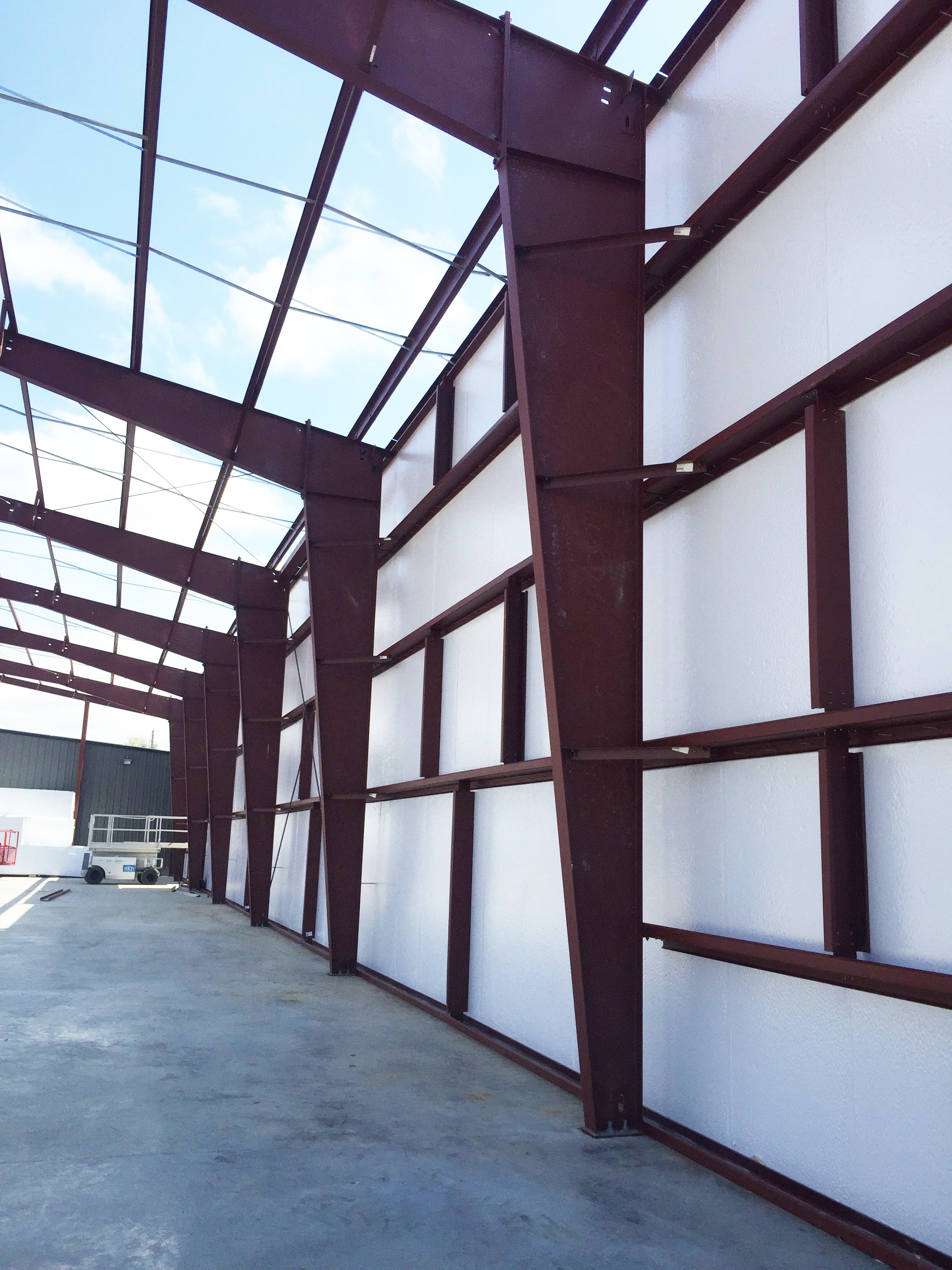Rigid Insulation vs laminated batt
San Diego, California is widely reputed to have one of the best climates of any city in the world with over 300 sunny days per year and average winter temperatures of around 13 degrees. Unfortunately, for most Canadians, this kind of climate is not a reality, so if you’re considering installing a new steel building in Canada, you’ll have to think seriously about insulation.
Insulation is one of the most important features of your steel building construction. It not only regulates the temperature inside your steel building – increasing energy efficiency and helping to conserve non-renewable energy sources, but it also helps to prevent moisture from entering inside the structure, protecting your assets and avoiding unwanted water damage.
The two types of insulation
Whether you’re building a brand new steel building, or retrofitting insulation on an existing structure, there are a few different types of insulation that you could consider, but for most steel buildings the choice is between rigid insulation or laminated batt (fibreglass). There are a few ways you could approach your insulation:
You could just look at R-value – the higher the value, the greater the insulating power. R-values range from R-1 (a piece of wood) to R-32 (top quality insulation). So you could make a decision based purely on how well it will protect your building and its contents from the cold.
Or you could just look at price – with rolls of laminated batt (fibreglass) costing roughly half the cost of rigid insulation, you would certainly save money if you opted for fibreglass. As an example, take a look at the chart below which shows the difference in price for installing steel building insulation:
| Material | R-Value | Price for 100 sq metres |
| Laminated batt (fibreglass) | R-28 | $XXX |
| Rigid Insulation | R-28 | $XXX |
But before you go ahead and choose on either one of these qualities alone, it’s worth considering how the two can work together to provide an optimal thermal protection whilst making economic savings wherever possible. Read on for more information which will help you to make the best decisions for your steel building insulation.
Rigid insulation
Rigid insulation comes in several different types, and varying insulating ability. Sometimes called “foam board”, it’s made from expanded polystyrene (EPS), extruded polystyrene (XPS), or polyisocyanurate. It is often covered with a foil coating to further improve insulating performance.
Advantages of rigid insulation:
- Very readily available and easy to install even on large surfaces such as outside walls
- Withstands moisture very well without cracking or deforming
- Provides excellent soundproofing as well as thermal insulation
- Excellent as a floor insulating material
- Straightforward insulation, with no special equipment necessary
Disadvantages of rigid insulation:
- Compared with fibreglass, rigid insulation has a relatively low R-value meaning it is not as good at trapping in the heat
- Rigid insulation tends to be more expensive than fibreglass
Laminated batt (fibreglass) insulation
Fibreglass insulation can often be identified as “the pink stuff”. Giant rolls or individual batts (unrolled pieces) of spun fibreglass contain tens of millions of air pockets which provide high value thermal insulation. This insulation packs a punch in terms of protection from the cold and has other advantages too.

Advantages of laminated batt (fibreglass) insulation
- High R-value meaning excellent temperature regulation
- Far less expensive per square metre than rigid insulation (around half the price)
- Flexible to fit around vents and wall bracing
Disadvantages of laminated batt (fibreglass) insulation
- Fibreglass is an irritant, so precaution must be taken when installing
- All of those tiny air-trapping holes can also trap moisture, so fibreglass can’t be used anywhere where moisture could be present
- Fibreglass doesn’t provide the soundproofing of rigid insulation
In conclusion: Partners not competitors
With the widely fluctuating temperatures and atmospheric features we have in Canada, it’s extremely important to make sure that your steel building is well-insulated. Whether you’re thinking of an agricultural steel building, commercial or industrial – you need to ensure that the external weather conditions don’t negatively impact your assets. So making smart choices for insulation is key.
When it comes to deciding between rigid foam and laminated batt (fibreglass) it’s best to think about your building’s various requirements and how the two types of insulation can work together to provide the features you need. For external and internal walls, which may require soundproofing alongside thermal regulation, a rigid board of insulation could be the best choice. When it comes to your roof, consider laminated batt (fibreglass) insulation, as this can offer savings alongside superior R-value insulation.
For a complete quotation on retrofitting your existing steel building, or to discuss the insulation requirements of a new steel building, get in touch with Zentner Steel Buildings today.

